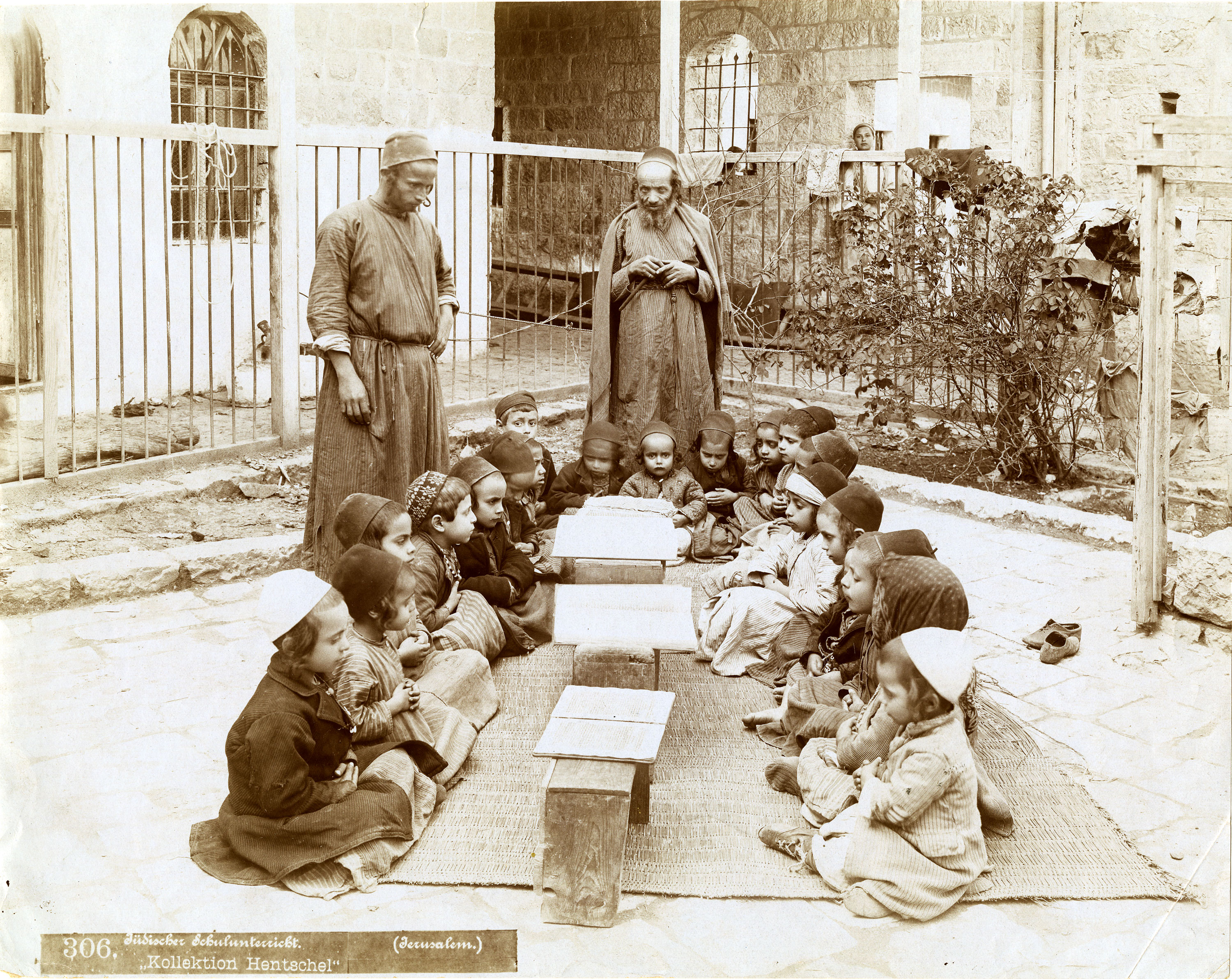his photograph is one of a series Bruno Hentschel took in Palestine at the turn of the last century. The young boys gathered around Hebrew texts are Yemenite Jews, part of a community that began settling in Jerusalem in the early 1880s; Jewish emigration from Yemen to Palestine began in 1881 and continued almost uninterrupted until 1914. Yemenite Jews were not strongly influenced by Zionism; most immigrated to Palestine in the hopes of precipitating the arrival of the messianic era. Like the children shown here, the majority settled in Jerusalem.
The cheder shown in this photograph was opened by a Yemeni Jew called Rav Zaddok, pictured standing at the head of the class. Orphaned as a young boy, Rav Zaddok grew up in the famed Diskin Orphanage in Jerusalem. In later years, he lived in the Jerusalem neighborhood of Mea Shearim and worked repairing sewing machines. In response to the influx of Yemeni Jews, he opened a cheder for their children, educating the young boys in keeping with Yemeni custom. According to Bat-Zion Eraqi Klorman, such a boy “received his basic skills from the children’s mori, a man versed in the Torah who could not make a living from any other trade and took it upon himself to teach young children.” Like children in Eastern European cheders, Yemeni boys were taught the Torah through reading and memorization; “the assumption behind this educational approach was that after mastering accurate reading, the student could easily gain understanding at a later stage of study.” Yemenite girls, like their European counterparts, received no formal religious education and were taught by their mothers in the home.
